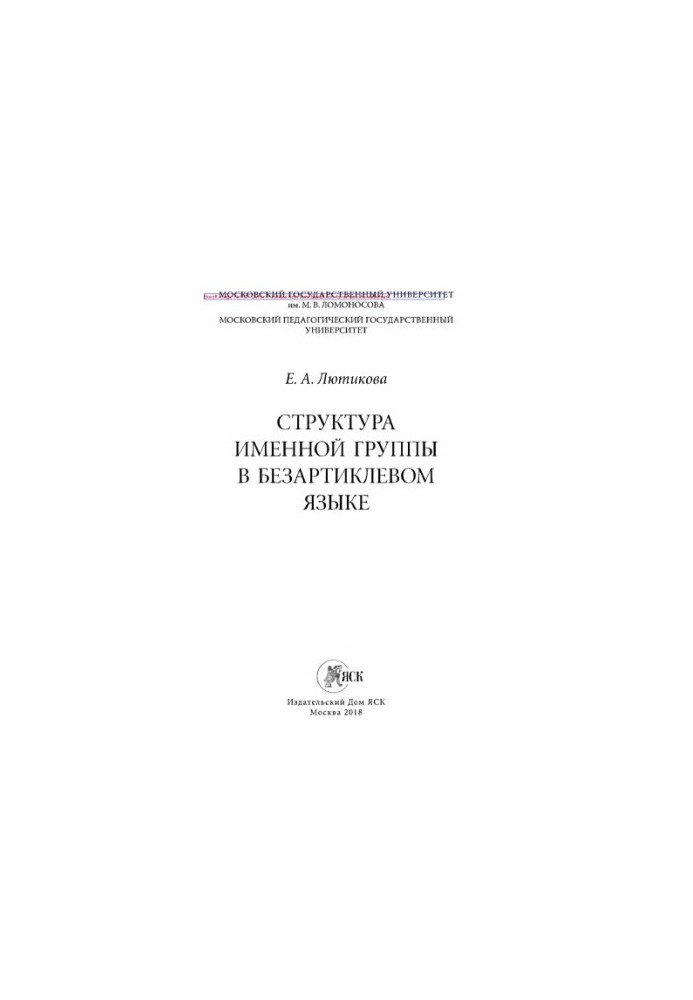Structure of the name group in a non-articulated language
 Instant download
Instant download
after payment (24/7)
 Wide range of formats
Wide range of formats
(for all gadgets)
 Full book
Full book
(including for Apple and Android)
The book "Structure of the name group in the articleless language" is a unique study that immerses the reader in the world of linguistics, revealing the subtleties and features of the articleless languages. The author's team, consisting of leading specialists in the field of linguistics, offers an in-depth analysis of the structure of the name group, which makes this work indispensable for students, teachers and anyone interested in language systems. This book discusses key aspects related to the formation and functioning of name groups in languages where there are no articles. This study not only enriches theoretical knowledge about languages, but also provides practical examples, which makes the material accessible and understandable. Readers will be able to learn how different language systems cope with tasks that in article languages are solved with the help of articles, and what alternative mechanisms are used to convey meanings. The book will be of interest to both linguists and those who are simply fond of languages and their structure. Students of philological faculties will find here useful materials for writing term papers and diploma papers, and teachers will be able to use it as a teaching aid. It can also attract the attention of interpreters working with non-articulate languages and anyone who seeks a deeper understanding of the mechanisms underlying language communication. The topics raised in the book cover a wide range of issues, from syntactic features to semantic nuances. The authors investigate how cultural and social factors influence the structure of language, and how this, in turn, affects the perception and use of language by native speakers. The book offers readers the opportunity to look at language not only as a system of signs, but also as a living organism that develops and adapts to the needs of society. The style of the authors is clear and logical, which allows the reader to easily follow their thoughts. Each section of the book is designed to gradually deepen the reader’s understanding, starting with basic concepts and moving on to more complex topics. This makes the book not only a scientific work, but also a fascinating reading for anyone interested in language and its structure. If you are looking for literature that will help you better understand how articleless languages function, and what mechanisms are behind their structure, then the “Structure of the name group in articleless language” will be a real find for you. It can be of interest to those who study languages such as Chinese, Japanese or Turkish, and wants to learn more about how they form name groups and what alternatives to articles exist. The book will also be an excellent addition to the library of those interested in comparative linguistics, as it opens up new horizons for the study and understanding of language phenomena. Do not miss the opportunity to immerse yourself in the fascinating world of articleless languages and their structure, which, despite the lack of articles, is full of nuances and wealth.
LF/392339008/R
Data sheet
- Name of the Author
- Collective of authors
- Language
- Russian
























